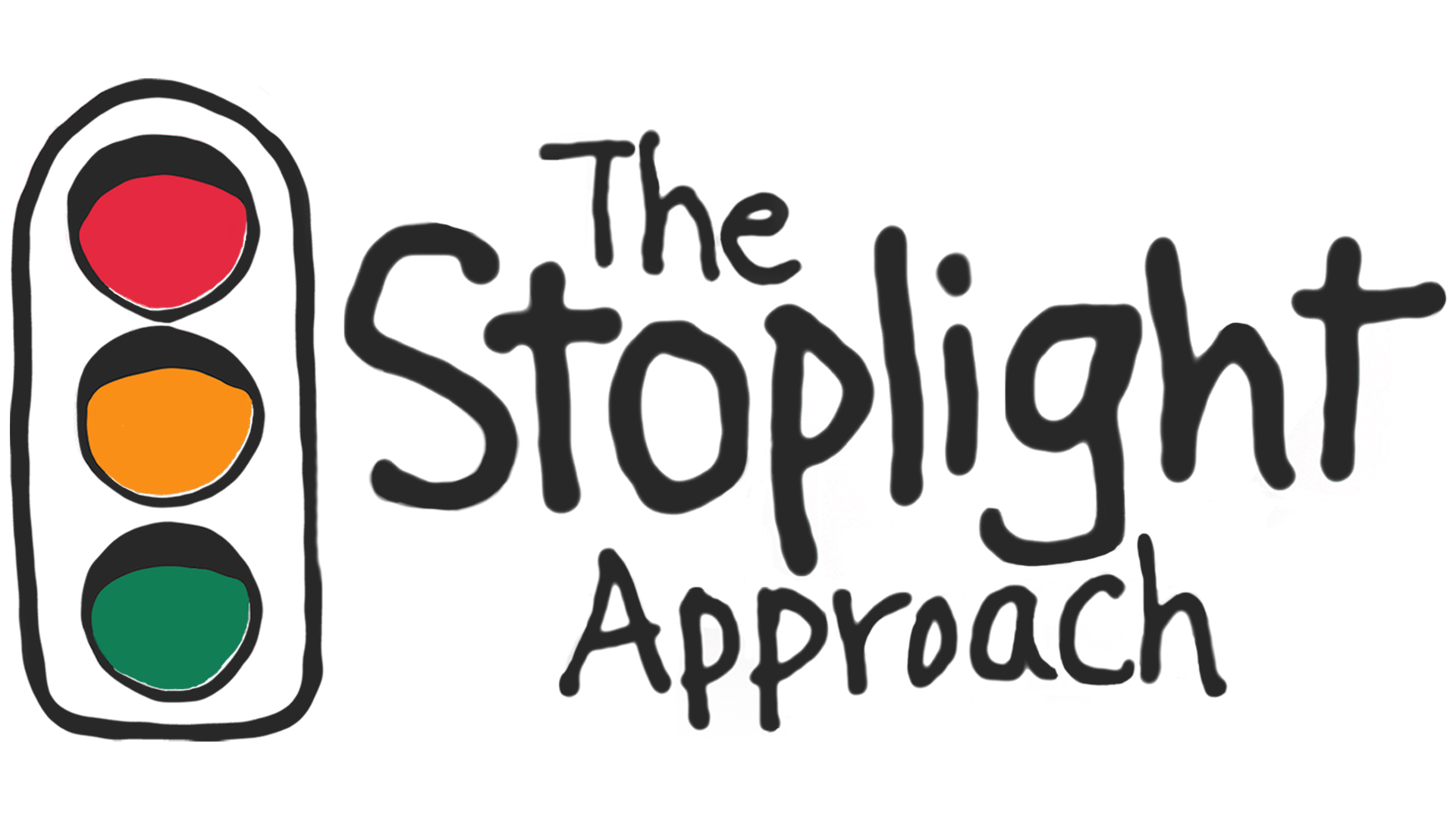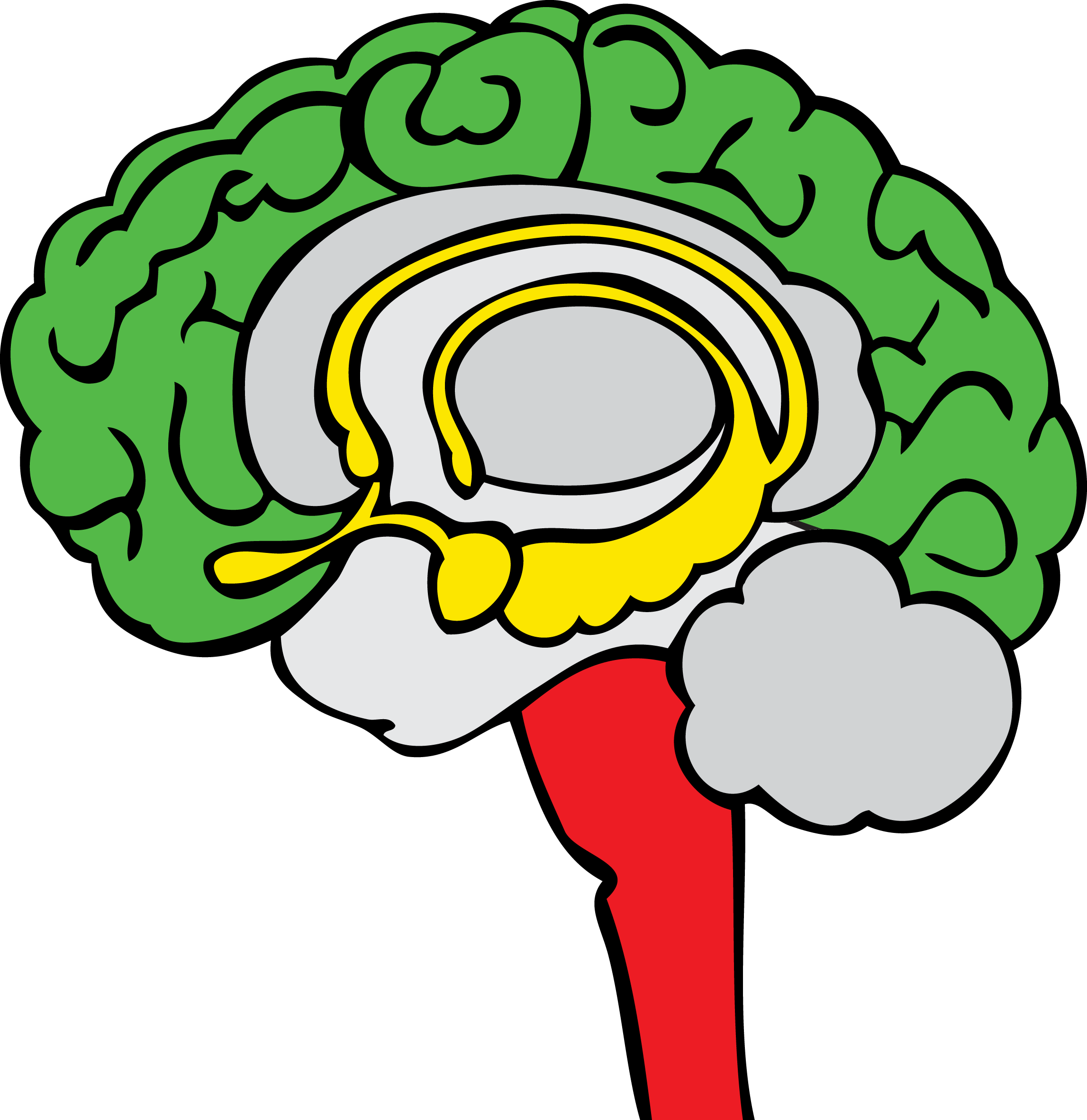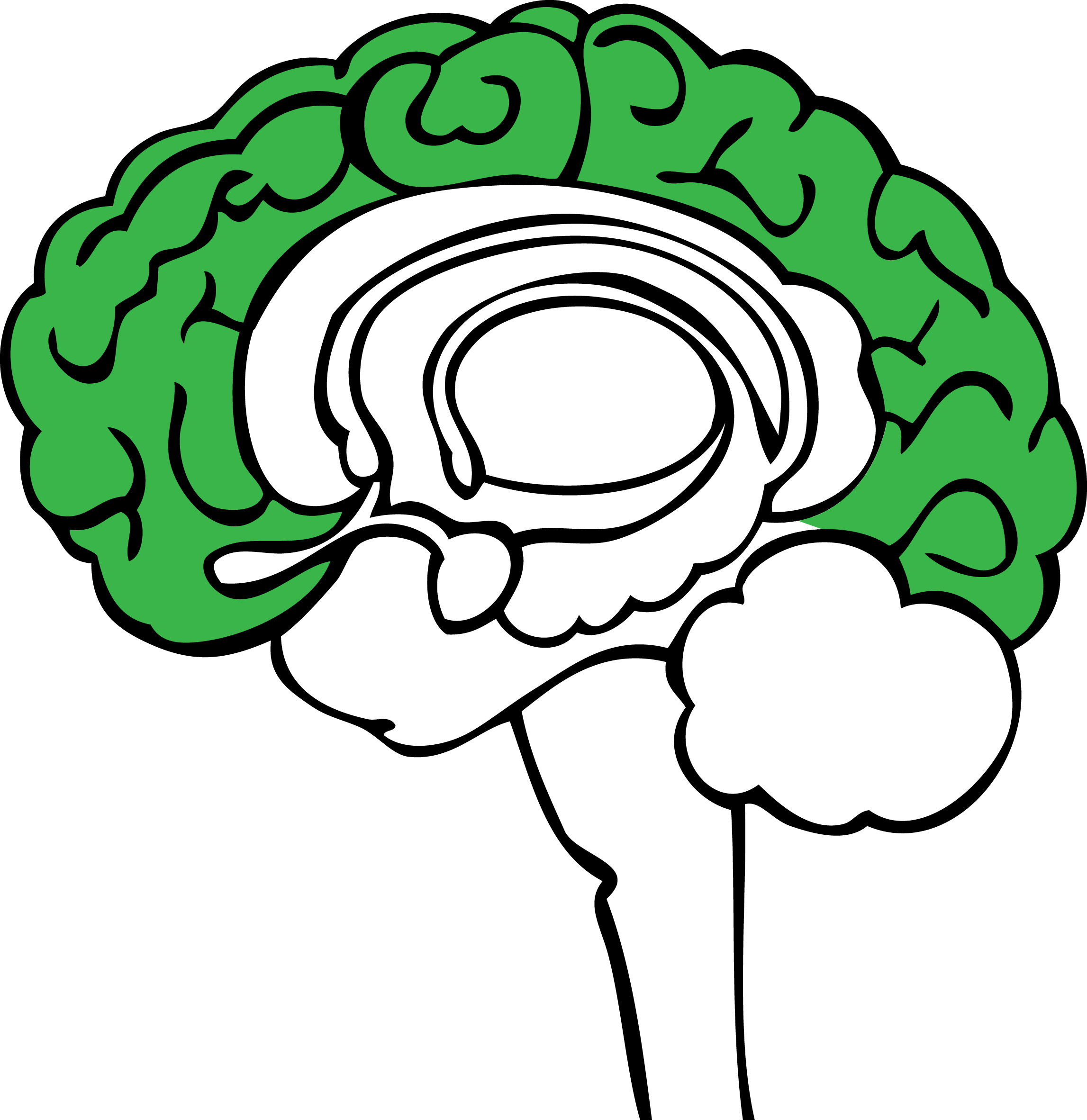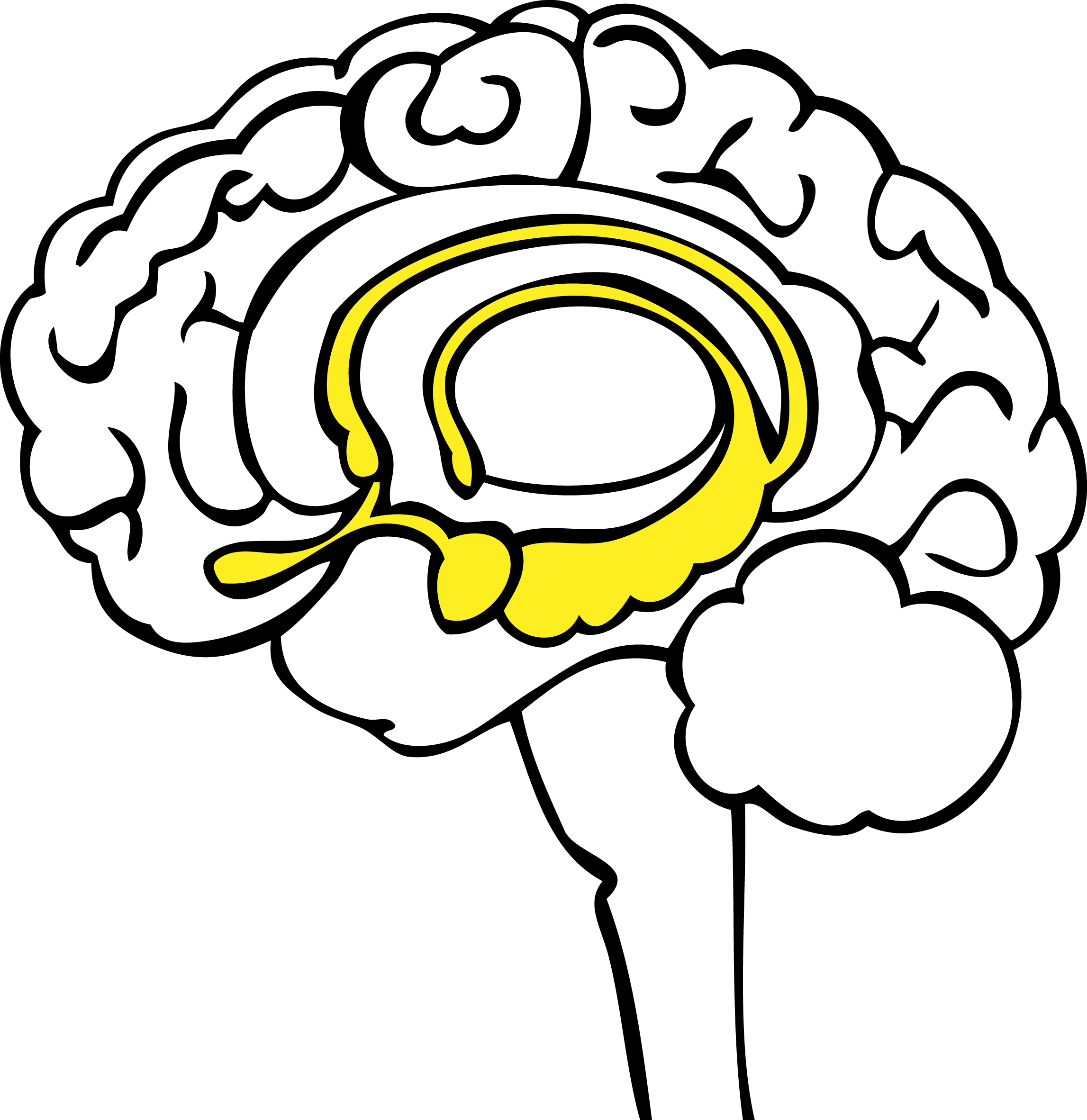The Stoplight Approach isn't just a philosophy; it's brain science. Based on state of the art research, recent scanning and imaging of the brain has allowed scientists to map different regions of the brain, along with their corresponding emotions, to reveal information which supports the Stoplight Approach 100%.
The 3 Parts
The three basic regions of the brain: the Neocortex (Green Brain), the Limbic System (Yellow Brain), and the Brain Stem (Red Brain).
Imagine that we have a traffic light in our brain, and whenever our brain shines either red, yellow, or green, it's trying to tell us something, and it's our job to listen to it. Most scientists would agree that, at its most basic components, the human brain consists of 3 main brain regions: the Brain Stem, the Limbic System, and the Neocortex. Because these words can be a mouthful, we have devised a simple way of referring to each: our Brain Stem is our Red Brain, our Limbic System is our Yellow Brain, and our Neocortex is our Green Brain. Each of these brain regions have corresponding emotions, meaning that when we feel a certain emotion, we are functioning out of either Red, Yellow, or Green Brain. Our emotion(s) then translate into a specific behaviour or action. The focus of the Stoplight Approach is emotional awareness to allow teachers and students (and everyone else) to recognize the effects of functioning out of Red, Yellow, and Green Brain, and why it is imperative to operate out of Green Brain when learning.
Feelings matter
It is easy to think that what occurs in reality is all that matters, but the power of perception is stronger than we realize. For instance, it is easy to think that physical safety is all that is needed in order to learn or function well. However, this is false. The feeling of being safe is just as important - if not, more. And science proves why. (See Red Brain below.)
It is also easy to think that it is possible to spoil children or students by loving them too much. False. Just as with feeling unsafe, feeling unloved or unvalued also hinders learning and functioning well. And science proves why. (See Yellow Brain below.)
Feelings and emotions are one of the key components of the Stoplight Approach and what make it so powerful. Dr. Dan Siegel, a renowned clinical professor of psychiatry, has developed a system called, "Name it to tame it." As science is proving, being able to identify and name emotions actually decreases the intensity of negative emotions, helping us to calm down quicker and return to a better state of mind.
Green Brain - The Neocortex
Brain science has determined that operating out of Green Brain is the best region of the brain from which to learn. This is because when we are in Green Brain, we are using 100% of our IQ, and we are ready and able to learn well. This state of mind is best for teachers and students to function out of - and every other human on the planet. One of the most important aspect of Green Brain to note is that when we are in Green Brain, we feel safe, loved, and valued.
EXAMPLES OF EMOTIONS:
- Happiness
- Peace
- Excitement
- Contentment
- Joy
THE PHYSICAL:
- Operating out of the neocortex, the part of the brain responsible for higher level thinking
- 100% of the brain is being used
- Optimal for living life
REACTIONS:
- Responding appropriately to situations
- Able to problem solve, critically think, and positively engage with environment
- Feels content and stable
- Able to integrate new knowledge and apply it to a variety of situations
- Learning is at maximum effectiveness
Yellow BRAIN - THE Limbic System
Functioning out of Yellow Brain means that it is more difficult to learn than when in Green Brain. This is because when we are in Yellow Brain, we are only using 75% of our IQ. One of the most important aspect of Yellow Brain to note is that when we are in Yellow Brain, we may feel safe, but we do not feel loved and/or valued. To get back to Green Brain, we need to feel loved and valued.
EXAMPLES OF EMOTIONS:
- Sadness
- Fear
- Tiredness
- Hunger
- Discouragement
THE PHYSICAL:
- Operating out of the limbic system, the part of the brain responsible for processing emotions
- 75% of the brain is being used
- Optimal for responding to emotional situations, such as advocating for and protecting our children
REACTIONS:
- Emotional, concerned, frustrated, and stressed
- Feels unloved and unvalued
- In a state of heightened awareness
- Learning will take longer
REd BRAIN - THE Brain Stem
Operating out of Red Brain means that learning is extremely difficult and there is little point in even trying to learn. This is because when we are in Red Brain, we are only using 50% of our IQ. One of the most important aspect of Red Brain to note is that when we are in Red Brain, we feel unsafe (along with feeling unloved and/or unvalued), and therefore are doing everything in our power to make us feel safe again. To get back to Yellow Brain, we need to feel safe.
EXAMPLES OF EMOTIONS:
- Anger
- Fright
- Grief
- Hurt
- Terror
THE PHYSICAL:
- Operating out of the brain stem, the part of the brain responsible for basic survival functions
- 50% of the brain is being used
- Optimal for responding to unsafe situations, such as meeting a lion in the wild
REACTIONS:
- Irrational and out of control
- Acting angry, running away, shutting down, or tuning us out
- Unsafe to themselves and those around them
- No empathy
- Cannot think clearly
- Cannot learn well
The Basics of Teaching
Without students learning in Green Brain, teaching is more difficult and exhausting. The Stoplight Approach is imperative for teachers everywhere to understand, to ensure they have tools to keep students in Green Brain, and know how to get them back to Green Brain when they have slipped into Yellow or Red. This not only helps make teaching easier, but also ensures students learn well and become healthy members of society, who can critically think and use their imaginations to create better a better future for the nation.





